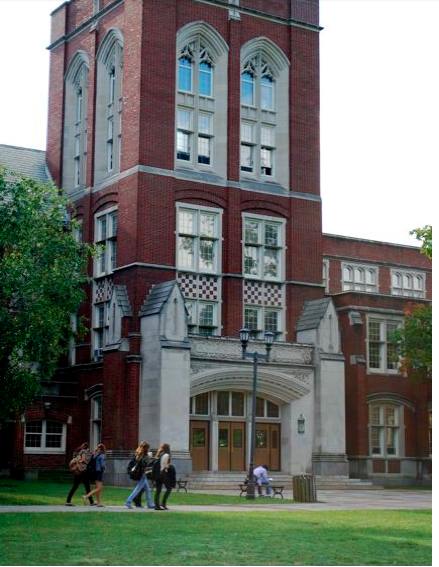SHS Principal Reports Impressive Student Stats for Scarsdale
- Thursday, 10 October 2013 12:58
- Last Updated: Thursday, 10 October 2013 13:05
- Published: Thursday, 10 October 2013 12:58
- Hits: 3219
 The Scarsdale School Board met at Edgewood School on October 7th and heard the first Educational Report of the school year from SHS Principal Kenneth Bonamo. Now serving his second year at the school, Bonamo gave a positive report on the state of the school, including updates on academics, teaching, extra-curriculars, guidance and college acceptances. Here are highlights of what he shared:
The Scarsdale School Board met at Edgewood School on October 7th and heard the first Educational Report of the school year from SHS Principal Kenneth Bonamo. Now serving his second year at the school, Bonamo gave a positive report on the state of the school, including updates on academics, teaching, extra-curriculars, guidance and college acceptances. Here are highlights of what he shared:
Staffing and Class Sizes: SHS has a high level of individualized in student academic support including a low student to teacher ratio of 11:1. Teaching quality has been described as the greatest influence of students' academic success, and class sizes help determine how much time a teacher can spend with each student. A class size in the low to mid-20s is the goal for all classes. Different academic levels of classes are offered ensuring that academic needs and abilities are met for all students.
Tutorial System: SHS has tutoring available for students. A survey was administered to 25% of student population (n=343) last spring. A total of 95% said teachers are readily available- 31% of students were tutored before school, 54% after school. Mr. Bonamo reported that 96% of students said tutorial time is helpful, whether to review for an upcoming exam or ask a question, and 98% take advantage of this support (18% often, 36% regularly, 34% sometimes, 10% rarely).
Student Support: SHS has 9 counselors/Deans that work with the same students during their four years at Scarsdale High School. They lead programs such as parent engagement seminars and help with the college application process. Consistent with peer schools, there are between 180-190 students allotted per Dean. There are also 2 staff psychologists, a school nurse, 2 academic support teachers, and 2 community outreach workers.
Professional Development: Mr. Bonamo defended the Scarsdale Teachers Institute and educational grants, stressing that investment in teachers' ongoing learning results in improved classroom education as well as increased enthusiasm for teaching. The Colorado River Project has been implemented in science classrooms and helps students learn creative and critical problem solving skills. The Math STI class has been cited as a program worth keeping, and interdisciplinary teaching is being encouraged when possible.
Innovations in Curriculum: Civic Education in 9th grade continues to help 9th graders transition to high school. Advanced Topics (AT) courses are offered at the High School level and provide advantages for students in college admission, prepare students for AP exams, and helps with national rankings. SHS has chosen an AT curriculum versus an AP curriculum in order to provide solid teaching and flexibility in the curriculum.
Administrative Support: SHS has 1 Principal and 3 Assistant Principals, on par with peer schools. The school spends $245 per student for materials such as textbooks and e-textbooks, SMART Board technology, wireless access within the school, etc. Extracurricular activities including drama, music, and athletics are offered. One third of students were on at least one team last year. Extracurricular activities increase students engagement in school, correlate positively with student achievement, and help them develop life skills. School safety and security has been enhanced and the feedback has been positive.
According to Bonamo, statistics demonstrate that the high school is turning out highly successful students. Here are the numbers:
- The class of 2013 had an average SAT score of 1937, the highest in the region (including lower Westchester and Nassau County). This average SAT score is consistent with scores over the last 5 years.
- 97% of students attended 4-year colleges from the 2013 graduating class. Among the class of 2014, 71 students (or 20%) were recognized as National Merit Scholars.
- Over the last 10 years, there was a 9-point increase (from 55% to 64%) in students accepted to the most competitive colleges.
- According to a survey of students that graduated in 2013, 68% felt better prepared for college as compared to their peers and 23% felt as prepared as their peers for college.
Reports from the other schools will follow at subsequent meetings.